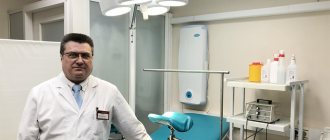Pale skin or cyanosis is a bluish discoloration of the skin and mucous membranes throughout the body or in fragments (sometimes in very limited areas of the skin, for example, only on the palms or fingers).
This phenomenon occurs due to a significant increase in the blood of the so-called reduced hemoglobin, or in other words, hemoglobin, which is not combined with oxygen.
Normally, the heart pumps blood into the lungs, where it is enriched with oxygen, and then goes back to the heart. It is then released to all organs and tissues, thereby reaching all parts of the body, supplying our organs and tissues with oxygen, and then returns with venous blood back to the heart, transporting carbon dioxide.
Cyanosis of the skin should be distinguished from the purple coloration of the face, which occurs with a disease such as erythremia or otherwise, a benign blood formation in which a large number of red blood cells appear in the blood. And also from cherry coloring of the skin, which occurs with carbon monoxide poisoning.
Cyanosis or pale skin coloring is divided into the following types:
- Central (throughout the body)
- Peripheral (in limited areas)
When does pallor occur throughout the body?
Central cyanosis or, in other words, pallor of all the skin of our body occurs when there is a violation of blood saturation in the lungs.
This happens in the following cases:
- Respiratory failure due to lung diseases
- Some blue-type heart defects, in which there is a pathological discharge of venous blood into the arterial bed due to defects in various walls of the heart, for example, with tetralogy of Fallot
- Exposure to various industrial poisons, such as aniline derivatives
- Taking certain medications (for example, sulfa drugs)
As a rule, the disappearance of the pathological factor, as well as the supply of oxygen, leads to a decrease in the severity of cyanosis.
Pediatrician appointment prices:
| TYPES OF MEDICAL SERVICES | Cost, rub. |
| Examination of a child by a pediatrician to obtain a certificate + certificate | 1950 |
| Visit of a pediatrician, consultation at home (Moscow) | 5400 |
| Consultation with a pediatrician at home for the second child | 1950 |
| Patronage for a newborn / gymnastics and swimming at home (1 session, pediatrician Kapina A.V.) | 6300 |
When does pale skin occur in certain areas of the body?
Peripheral cyanosis or local pallor of the skin, for example, the tips of the nose, lips, fingertips, occurs due to slow passage of blood through the capillaries and increased utilization of oxygen by tissues, as a result of which the content of reduced hemoglobin increases and gives the blood a dark color (bluish coloration of the skin).
This phenomenon occurs in the following cases:
- Hypothermia (spasmodic skin arterioles)
- Local circulatory disorders (for example, the presence of blood clots in the vessels of the legs with thrombophlebitis or arterial thrombosis)
- Formation of stenotic plaques in the arteries (with atherosclerosis)
- Severe heart failure (one of the main reasons for the slowing of blood flow through the capillaries due to a decrease in cardiac output. This phenomenon occurs, for example, with a history of myocardial infarction, cardiomyopathies, etc.)
- Pulmonary embolism (PE). Cyanosis occurs, more often, in the upper half of the body, and is associated with the separation of a blood clot from the veins, most often of the lower extremities, with further entry into the pulmonary artery. This cyanosis is accompanied by a pronounced deterioration of the condition and, with significant blockage of the pulmonary artery, can lead to death.
- Heart defects, such as acquired mitral valve stenosis.
Normally, blood from the lungs enters the left atrium, then through the mitral valve into the left ventricle. With stenosis (narrowing) of this valve, a full amount of blood no longer enters the left ventricle and, like a subway during rush hour, blood begins to stagnate in the previous sections, in particular in the lungs. In such cases, a bluish discoloration of the skin is often accompanied by severe shortness of breath, swelling, wheezing in the lungs and even sometimes hemoptysis.
Also, cyanosis may be present “paroxysmally” in the form of paleness and blue discoloration, for example, of the fingers. This happens with Raynaud's syndrome. Let us recall that Raynaud's syndrome is characterized by local spasm of arterioles in the extremities. Manifests itself in the form of clearly defined pallor of the skin. This syndrome is observed in the following cases:
- Diffuse connective tissue diseases, especially scleroderma
- Diseases of peripheral vessels (for example, with atherosclerosis of the vessels of the extremities)
- Vibration disease
- Frostbite
- Chronic finger injury
- Endocrine disorders (thyroid, gonads)
- Taking various medications (for example, cytostatics)
- Genetic disposition
An attack of peripheral spasm of arterioles in the extremities can be associated with severe anxiety, smoking, coldness or fatigue of the fingers.
Externally, Raynaud's syndrome is manifested by numbness, pain, paleness of the fingers due to spasm of the arteries and a changing bluish coloration of the skin.
This cyanosis results from compensatory dilation of the capillaries and veins, followed by redness of the affected finger at the end of the attack. This redness is due to the dilation of arterioles and capillaries when blood flow is restored (for example, when the limb is warmed).
According to statistics, in approximately half of patients with these symptoms, the cause cannot be identified; in these cases, Raynaud's phenomenon is diagnosed. It develops more often in young people, more often in women.
Pediatricians:
Avzalova Daria Evgenevna
Pediatrician, neonatologist
Experience: 18 years Reviews: 7
Call to home
Barzenok Tatyana Arsenyevna
Head of the pediatric department, pediatrician of the first category
Experience: 28 years Reviews: 17
Make an appointment Call at home
Belousova Elena Sergeevna
Pediatrician, nephrologist
Experience: 18 years Reviews: 14
Make an appointment Call at home
Bykov Mikhail Viktorovich
Pediatrician of the highest category, ultrasound diagnostics specialist, Candidate of Medical Sciences
Experience: 25 years Reviews: 3
Make an appointment Call at home
Kazakova Liliya Valentinovna
Pediatrician, neonatologist, head of the breastfeeding consultant service
Experience: 28 years Reviews: 31
Make an appointment Call at home
Sedova Maria Sergeevna
Pediatrician, allergist-immunologist
Experience: 20 years Reviews: 30
Make an appointment Call at home
Sergienko Tatyana Yakovlevna
Pediatrician, pediatrician on duty at the pediatric hotline
Experience: 39 years Reviews: 21
Make an appointment
Signs and symptoms of presyncope: dizziness, nausea
Symptoms of presyncope are characterized by sudden development, which is usually provoked by certain factors. A stuffy room, tight clothing, stressful situations, excessive physical activity, eating - all this can contribute to the onset of an attack.
The most characteristic symptom of presyncope is dizziness, which may be accompanied by nausea. This indicates disturbances in the functioning of the human autonomic system.
There is a certain risk group of people for whom the presyncope may be permanent. These are people suffering from hypotension (low blood pressure), chronic anemia (low hemoglobin level in the blood, less than 100 units), bradycardia (low heart rate, less than 40 beats).
Any of the described signs is a serious reason to see a doctor. But, since an attack of pre-fainting can occur at any time and in any place, it is necessary to have at least a general understanding of how to provide first aid to the victim or yourself at home.
What to do if you feel faint: first aid
All first aid techniques during a pre-fainting state are aimed at preventing the onset of full-fledged fainting. Let's look at all the necessary steps in detail.
- The first is to provide oxygen access to the room, and, if possible, take a comfortable position. Remove all objects that put pressure on the chest and neck (scarf, tight collar, tie). To better saturate the blood with oxygen, it is necessary to take rhythmic inhalations and exhalations. If the breathing process is difficult, ammonia will help. A sweet, warm drink in the form of tea also helps relieve an attack. If you suspect evaporation of harmful substances in the room or a gas leak, you should quickly leave the building and go outside.
- After the crisis has passed, the body must be provided with the required amount of fluid, which involves consuming at least 2.5 liters of water per day. Taking drugs such as Asparkam and Panangin will normalize the balance of electrolytes in the blood and ensure normal blood supply to all organs. And, of course, it is necessary to establish the cause of the pathology.
- If you have chronic fatigue syndrome, you must take the necessary vitamins and minerals and ensure all conditions for normal work and rest. In case of hypotension or anemia, the cause of this condition should be immediately determined. Since some pathologies require immediate medical attention.
Everything we talked about in this article needs to be known and remembered by every person. Because presyncope attacks develop suddenly, which can pose a serious threat to life. After all, at this moment a person can cross the roadway or drive a car. The most important thing when providing first aid to yourself or your loved ones is to prevent full-blown fainting from developing.
Primary appointment with a neurologist: 1850 RUR.
Sign up Online 5% discount when registering from the site
MAKEUP WITHOUT MAKEUP
Creams with a tinting effect (tinted cream) are a cross between moisturizers and foundation; they are very light and transparent. Ideal for those with problem-free but fairly pale skin: they practically do not mask imperfections, but look completely unnoticeable on the skin, making it more well-groomed and “rested.”
4
Moisturizing cream with tinting effect Dream Tint SPF 15 Moisture Tint, Jane Iredale (about 1,500 rubles).
BB and CC creams. A more advanced option: they not only moisturize the skin, but also actively care for it. If BB creams are focused on comprehensive care, then the main task of CC creams is to improve and even out the complexion. Such products are ideal for those who need to hide not only pallor, but also “blackheads”, spots left over from acne and other imperfections: their coverage is denser.
5
Moisturizing corrective cream Ideal Flawless CC Cream, Avon (about 250 rubles).
Bronzing powder. It will help out if you need an instant effect or creams alone are not enough. Place it on a wide brush and lightly touch the protruding parts of the cheeks, chin, center of the forehead, and the back of the nose. The main thing is not to overdo it and choose not very dark powders; for “snow whites”, not even golden brown, but peach-beige, are ideal.
CORRECT CARE AT HOME
Creams for “radiant” skin contain vitamin complexes that, when used daily, significantly improve complexion, and often also contain special particles (reflective, bronzing, etc.) for an instant effect. Look for the following components in the list of ingredients: vitamins A, C and E, coenzyme Q10, extracts of grapes, tea, gingko, bearberry, pearl or mother-of-pearl proteins.
1
Moisturizing cream for improving complexion with a lifting effect Skin Illuminating, Elizabeth Arden (about 2,600 rubles).
If you need faster and more noticeable results, add serums and masks to your creams to improve your complexion. Thanks to the increased concentration of active ingredients, the effect will be noticeable after the first use. They are irreplaceable as an SOS tool. However, for maximum and lasting results, it is better to use them regularly: the renewal cycle of epidermal cells is at least 28 days, respectively, and we will see the maximum result in about a month.
2
Face mask “Skin Radiance”, Cettua (about 200 rubles).
Creams and gels with a gradual tan. Such products work due to dihydroxyacetone - the main component of all “self-tanners”, which enters into chemical reactions with the molecules of the epidermis and gives the skin a light tan. But creams with a gradual tanning effect contain dihydroxyacetone in very small concentrations. Accordingly, the “tan” appears slowly and very slightly; strictly speaking, it’s not even a tan - the skin just doesn’t look so pale, and the effect comes on gradually - as if you simply began to rest more.
3
Moisturizing day cream with tanning effect Golden Glow Moisturizing Cream-Gel, Clarins (about 1,650 rubles).







